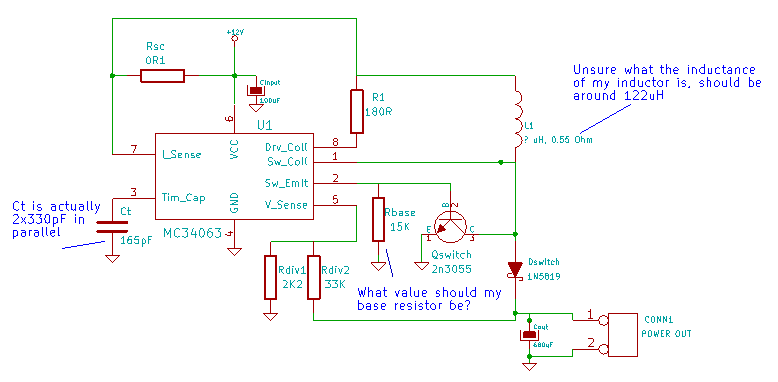Hi,
I'm trying to build a boost converter using an MC34063 (I already bought a bunch of these cheap jellybean converters), and my PSU specs are as follows:
12-15V input
19V output at 2A
Now the high current is the issue, and I'm certain that I'll need a pass transistor, but the MC34063 datasheet doesn't specify which type of transistor or how much power dissipation it has to handle, etc.
Can anyone give me some advice on how to choose a suitable transistor please?
Thanks,
electronwaster
I'm trying to build a boost converter using an MC34063 (I already bought a bunch of these cheap jellybean converters), and my PSU specs are as follows:
12-15V input
19V output at 2A
Now the high current is the issue, and I'm certain that I'll need a pass transistor, but the MC34063 datasheet doesn't specify which type of transistor or how much power dissipation it has to handle, etc.
Can anyone give me some advice on how to choose a suitable transistor please?
Thanks,
electronwaster






